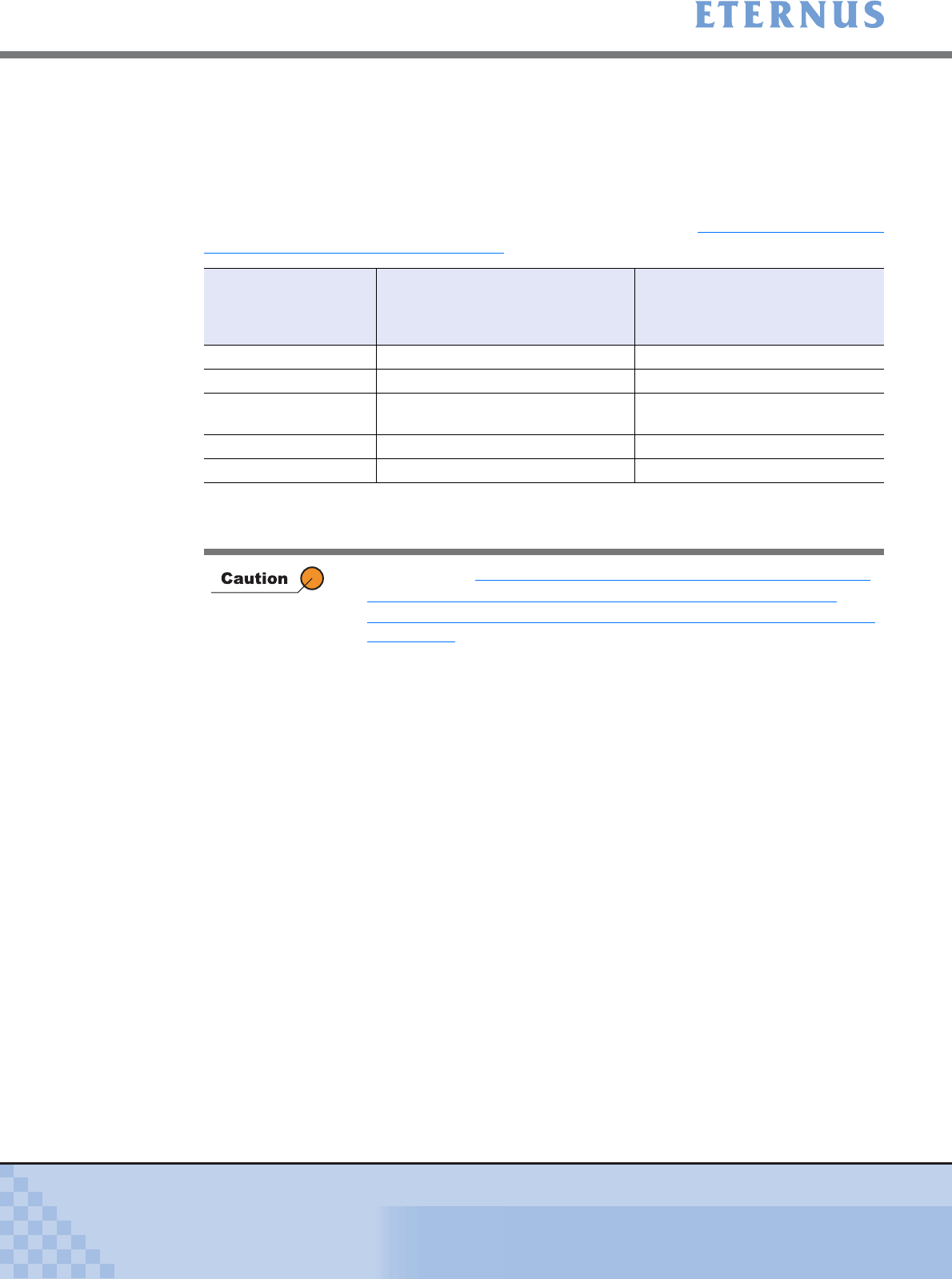
Chapter 5 Configuration Menu
> 5.2 RAID Management
ETERNUS DX400/DX8000 series ETERNUSmgr User Guide Settings/Maintenance
217
Copyright 2010 FUJITSU LIMITED
P2X0-0760-02ENZ0
■ The maximum number of volumes / The maximum capacity of Thin Provisioning
Volumes for each model
RAID Migration creates a new volume. The following table shows the maximum number of vol-
umes and the maximum capacity of Thin Provisioning Volumes which can be created for each
model.
For the maximum number of volumes for each RAID Group, refer to "The maximum number of
volumes for each RAID Group" (page 168).
*1: The maximum number of volumes when creating Thin Provisioning Volumes. However, the actual
number of volumes that can be created is l e s s t h a n t h e m a x i m u m v a l u e a s s p e c i f i e d b y t h e T h i n
Provisioning function.
Model
The maximum number of volumes
(Open Volume + Snap Data Volume +
Snap Data Pool Volume +
Thin Provisioning Volume)
The maximum capacity of
Thin Provisioning Volumes (TB)
(The total capacity of
Thin Provisioning Volumes)
ETERNUS DX410 2048 312
ETERNUS DX440 4096 630
ETERNUS DX8100 3712
(4096) (*1)
630
ETERNUS DX8400 16384 1024
ETERNUS DX8700 16384 1024
• In addition to "Migration Source Volume Requirements" (page 214),
"Migration Destination RAID Group Requirements" (page 215)
, and
"Migration Destination Thin Provisioning Pool (TPP) Requirements"
(page 215), the following requirements must be met to execute
migration.
Click the [OK] button to return to the [Menu] screen if a message
appears, depending on the status of the ETERNUS DX400/DX8000
series.
- The total number of active migrations and TPV Balancing must be 31
or less
- The free space available for RAID Migration must be larger than the
total capacity of all the volumes available for RAID Migration
- The maximum number of volumes are not created in ETERNUS
DX400/DX8000 series.
- When Resource Domains are registered in ETERNUS DX400/
DX8000 series, work volumes can be assigned to the Resource
Domain to which the migration source volume belongs (*1)
*1: When Resource Domains are registered, and if the sufficient number of
Assignable Resources for Logical Volumes does not exist in the Resource
Domain to which the migration source volume belongs, migration cannot
be executed. The number of Logical Volumes that have been assigned to
the relevant Resource Domain and the number of Assignable Resources
can be checked using the [Resource Domain List] function.
• When the volume capacity of the new location is expanded with RAID
Migration, it is necessary for the server to recognize the expanded
volume capacity after the migration is complete. Refer to each OS or the
file system manual for operation from the server.


















